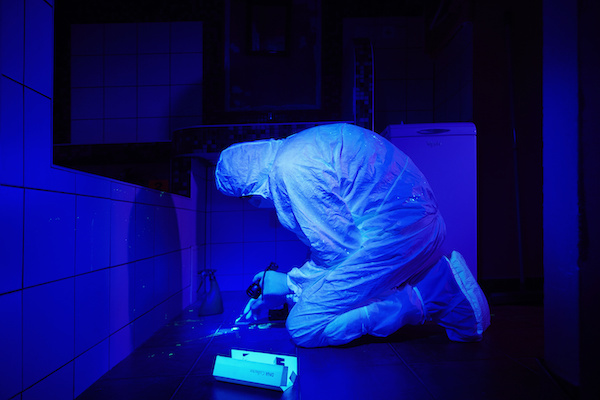These days, forensics plays a critical role in many different fields. The primary purpose is to apply science or scientific knowledge to criminal investigations to enhance public safety. In addition, accurate forensics plays a crucial role in identifying criminals and putting the pieces together at crime scenes. Therefore, forensics teams need access to the best forensic tools available. When the best tools are required, this is when UV lenses enter the picture.
Uses Of UV Lenses In Law Enforcement
After a crime, evidence collection is essential to establish facts surrounding the crime and identify potential suspects. Unfortunately, detectives and law enforcement officials relied on their eyesight and insufficient evidence collection methods in the past. For instance, lifting fingerprints with tape is prone to errors or omissions, even if unintentional.
UV Lenses Role In Crime Scene Investigation
UV imaging offers a solution when detectives and crime scene investigators need to go deep into the UV spectrum to capture evidence images not possible using traditional cameras.
The 320 NM to 400 NM is the most common wavelength generated by portable lamps in the forensic industry.
This specific wavelength exposes several clues that would otherwise go undetected. For example, many materials fluoresce when exposed to UV light. As a result, bodily fluids, including semen, blood, and saliva, are all detectable and brought to light with UV imaging.
Reflective And Fluorescent UV Imaging
The main types of UV imaging are reflective and fluorescent. In reflective imaging, the object gets illuminated with UV light, and a camera equipped with a UV-sensitive lens captures the image. This type of imaging commonly examines large objects, such as flooring, walls, furniture, or vehicles, for evidence.
The investigator covers the object with a fluorescent powder before illuminating it. The powder absorbs UV light and then emits visible light. The camera captures this visible light and then projects the image to the screen. Fluorescent imaging is ideal for examining smaller objects, such as doorknobs, clothing fibers, or pieces of paper.
Typically, law enforcement relies on Reflected Ultraviolet Imaging Systems, or RUVIS, to detect bloodstains that weren’t uncovered during the initial crime scene investigation.
RUVIS uses a high-intensity UV light source to illuminate an area, and then a camera captures the images reflected off the surface. After capture, the investigative team stores them on a computer for further analysis. When used as solid evidence, these images can help convict a criminal.
Fluorescent imaging is often used in the laboratory as it allows for a more detailed examination of evidence. For example, fluorescent microscopy can examine hair or fibers to determine their type. Prosecutors can then use this information to narrow down the suspect pool.
Keep in mind there are several different UV lenses on the market, each designed for specific applications.
For example, some lenses are better suited for crime scene investigation, while others are better suited for laboratory analysis. Therefore, to get the most from your UV lens, it’s essential to select the right one for your use case.
Getting Closure On Cold Cases
Sadly, many crimes go unsolved. The reasons could range from lack of evidence, improper or incomplete handling of evidence, to the investigation not being appropriately conducted in the first place.
However, as technology advances, so does the chance of solving cold cases. With the help of a UV lens, cold case investigators can resubmit evidence for analysis. In addition, forensic technology, combined with greater access to DNA databases, has led to perpetrators being identified and brought to justice years after the suspect committed the crime.
For families and loved ones of unsolved crime victims, this can provide a sense of closure that would otherwise be impossible.
Overturn Wrongful Convictions
Not only can forensic evidence help solve cold cases, but it can also help exonerate people convicted of crimes they did not commit. In some cases, wrongful convictions have led to innocent people spending years in prison or facing the death penalty.
One reason for this is that traditional forms of evidence, such as eyewitness testimony can be notoriously unreliable. However, DNA evidence is a reliable way to identify the actual perpetrator of a crime. As a result, DNA forensic evidence has helped overturn wrongful convictions to ensure that justice prevails.
DNA forensic evidence is a vital tool in the fight against wrongful convictions.
UV Lenses And The Future Of Forensics
As technology evolves, so will the tools that criminal investigators and law enforcement officials have at their disposal.
At Universe Optics, we offer a wide range of UV lenses specifically designed for forensic applications. Our UV Lens experts can help you choose the right lens for your use case.
If you have any questions about our products or services, please don’t hesitate to contact us.